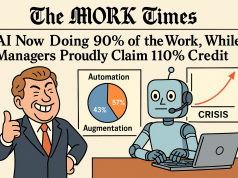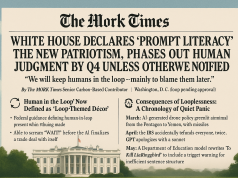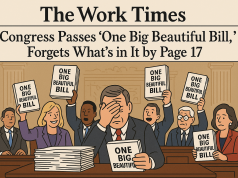In the sprawling expanse of the public sector, where authority is often draped in red tape and protocol, career advancement can seem like an artful dance within a labyrinth of power. The pathways to success are seldom straight; they wind through complex hierarchies and are punctuated by gatekeepers that demand a blend of political acumen, steadfast networking, and the savvy navigation of bureaucracies. For the uninitiated, this might seem daunting, but for those with an eye for strategy and a will to persevere, it’s a challenge ripe with opportunity.
The Washington Post, The New Yorker, and The New York Times readers familiar with tales of political intrigue and intellectual exploration will appreciate the depth and nuance required for ascending the ranks in the public sector. What does it take to not only survive but thrive in government? Success stories from across the civil landscape often reveal a common thread: an intricate understanding of the political environment, the cultivation of an extensive network, and the ability to artfully maneuver within a rigid system.
Consider the story of Alex, a mid-level analyst in the Department of Energy, who realized early on that career advancement was as much an exercise in relationship-building as it was in producing stellar reports. By fostering connections within her department and expanding her circle to interact with influencers in other agencies, she became a known entity, respected for her contributions and consulted on key issues. Her network became her navigation chart through the labyrinth.
Then there’s Jordan, whose rise in the State Department was fueled by a commitment to continuous education and a knack for policy impact. By taking evening courses in international relations and earning a reputation as someone who could translate complex policy into actionable plans, Jordan secured a seat at the table where decisions were made.
Mentorship plays a pivotal role in guiding the uninitiated through the intricate maze of government work. A mentor serves not only as a guide but as a strategic ally, offering insights into the unspoken rules that govern career advancement. These relationships can be the difference between a career that stalls and one that soars.
In this era of rapidly evolving public administration, the dynamics of government work are changing. Traditional career paths are being upended by technological advancements and a shifting policy landscape, presenting both new challenges and new opportunities. Public servants must now be more adaptable, resilient, and forward-thinking than ever before. The rise of remote work, the integration of big data into policy-making, and the increased focus on diversity and inclusion are transforming what it means to work in government.
The ambitious government worker of today must not only navigate the existing structures but also anticipate and adapt to the future of public service. As the tides shift, so too must the strategies for career progression. Staying informed, embracing lifelong learning, and being proactive in the face of change will be the hallmarks of those who not only advance but lead in the government of tomorrow.
For those aspiring to carve out their success stories in the annals of public service, remember: the labyrinth may be complex, but it is navigable. With the right tools, strategies, and relationships, the path to power and influence is within reach.



























